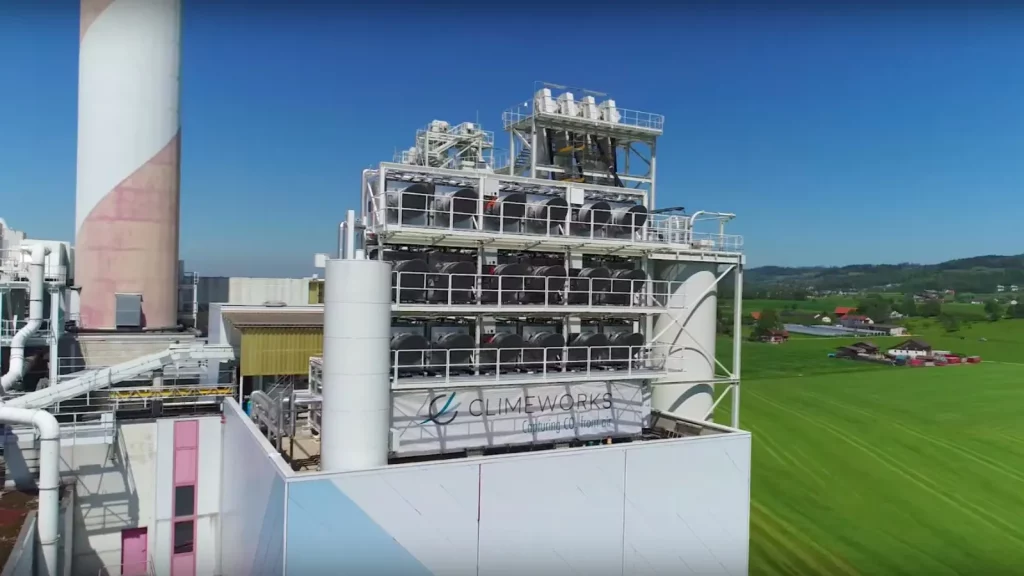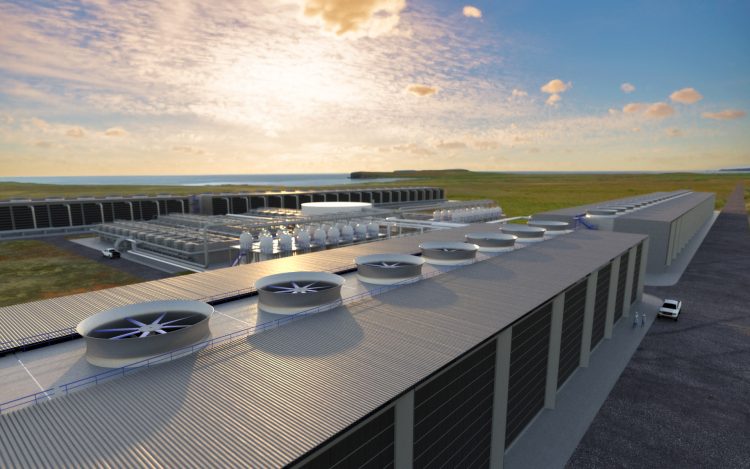Introduction: Addressing the Climate Crisis with Carbon Capture Technologies
Climate change is one of the most pressing challenges facing humanity today, and its devastating effects are becoming more evident with each passing year. Rising global temperatures, extreme weather events, melting ice caps, and rising sea levels are just a few of the symptoms of global warming caused by human activities, primarily the emission of greenhouse gases (GHGs) such as carbon dioxide (CO2).
Among the most promising technologies to combat the ongoing climate crisis is carbon capture and storage (CCS). By capturing CO2 from the atmosphere and storing it underground or converting it into useful products, we can significantly reduce the concentration of this greenhouse gas in the atmosphere, potentially slowing or even reversing the impacts of global warming.
In this article, we will explore the scientific principles behind carbon capture technologies, the different methods of storing CO2, the challenges of scaling these technologies, and the potential benefits they offer in the fight against climate change. We will also highlight the role of tech companies, governments, and environmental organizations in advancing carbon capture technologies and integrating them into global efforts to mitigate climate change.
1. Understanding the Science of Carbon Capture
1.1 The Role of CO2 in Global Warming
CO2 is one of the primary greenhouse gases contributing to global warming. It is released into the atmosphere through human activities such as burning fossil fuels, deforestation, industrial processes, and agriculture. CO2 traps heat in the Earth’s atmosphere, creating the greenhouse effect, which causes global temperatures to rise.
The concentration of CO2 in the atmosphere has increased significantly since the Industrial Revolution, primarily due to the burning of coal, oil, and natural gas. This increase in CO2 levels is directly linked to the warming of the planet and the disruption of ecosystems.
To mitigate the effects of climate change, it is crucial to reduce the amount of CO2 released into the atmosphere and, where possible, capture and store the excess CO2 that is already present.
1.2 The Need for Carbon Capture Technologies
While reducing emissions through energy efficiency, renewable energy adoption, and lifestyle changes is critical, these efforts alone may not be sufficient to meet global climate targets. The Intergovernmental Panel on Climate Change (IPCC) has identified carbon capture and storage (CCS) as a key technology for achieving the Paris Agreement goals of limiting global warming to well below 2°C above pre-industrial levels.
CCS allows for the removal of CO2 from the atmosphere, even from industries that are difficult to decarbonize, such as cement production, steel manufacturing, and chemical processing. It is seen as an essential tool for mitigating climate change alongside emission reductions.

2. The Process of Carbon Capture and Storage
2.1 Capture: Extracting CO2 from the Atmosphere
Carbon capture involves three main stages: capture, transport, and storage.
- Capture refers to the process of separating CO2 from industrial emissions or directly from the air. There are several methods to achieve this, each with its own advantages and challenges. The three main methods of CO2 capture are:
- Post-combustion Capture:
This method involves capturing CO2 from flue gases after fossil fuels are burned. It is commonly used in power plants and industrial facilities that produce large amounts of CO2. Specialized solvents are used to absorb the CO2 from the exhaust gases, which are then separated and compressed. - Pre-combustion Capture:
In this method, fossil fuels are gasified into a mixture of hydrogen and carbon monoxide. The carbon monoxide is then converted into CO2, which is captured and separated. This technique is often used in combination with gasification power plants and refineries. - Direct Air Capture (DAC):
DAC is an emerging technology that captures CO2 directly from the atmosphere. This method uses chemical processes to extract CO2 from ambient air and compress it for storage or utilization. While DAC has the potential to significantly reduce atmospheric CO2, it is currently energy-intensive and expensive, though costs are expected to decrease with technological advancements.
2.2 Transport: Moving CO2 to Storage Sites
Once captured, CO2 must be transported to a storage site. Pipelines are the most common and efficient method for transporting large quantities of CO2 over long distances. In some cases, CO2 can also be transported by ships, especially when storage sites are located offshore.
The transportation infrastructure must be safe and well-regulated to prevent leaks and ensure the integrity of the CO2 during transport. For example, CO2 pipelines are typically monitored for leaks, and systems are put in place to address any potential issues.
2.3 Storage: Securing CO2 Underground
The final step in CCS is storing the captured CO2. There are three main methods of storing CO2:
- Geological Storage:
CO2 can be injected into deep underground rock formations, such as depleted oil and gas reservoirs, deep saline aquifers, or unmineable coal seams. These formations are naturally impermeable, preventing the CO2 from escaping back to the surface. Geological storage is currently the most widely used method, with several carbon capture projects in operation around the world. - Ocean Storage:
CO2 can be stored in the ocean by injecting it into deep-sea waters. However, this method is still in the experimental stage and has raised concerns about potential impacts on marine ecosystems. - Mineral Carbonation:
This process involves chemically reacting CO2 with minerals to form stable carbonates, which can be stored safely in the earth. This approach is still under research and development but offers a potentially safe and permanent solution to CO2 storage.
While geological storage remains the most viable option, ongoing research is exploring new, more efficient ways to store CO2 and ensure long-term safety.
3. Technological Challenges and Opportunities
3.1 Scalability of Carbon Capture Technologies
One of the biggest challenges facing carbon capture is the scalability of the technologies. While individual CCS projects have demonstrated success in reducing CO2 emissions at the pilot scale, scaling up to the levels needed to make a significant impact on global CO2 concentrations requires substantial investment and infrastructure development.
The cost of capturing, transporting, and storing CO2 remains high, and there are concerns about the economic viability of large-scale CCS operations. Direct air capture (DAC), in particular, is still in its early stages and faces significant cost barriers, although advancements in materials and technology may reduce costs over time.
3.2 Public Perception and Regulatory Hurdles
Public perception and regulatory challenges also pose significant hurdles to the widespread adoption of CCS. Some communities are resistant to having CO2 storage sites located near them, citing concerns about safety and environmental impacts. Governments must develop strong regulatory frameworks that ensure the safety and transparency of CCS projects, particularly when it comes to long-term storage.
3.3 Technological Innovation and Future Potential
Despite these challenges, there is significant potential for innovation in carbon capture technologies. Many tech companies are working on improving the efficiency of capture processes, reducing the costs of storage, and developing new ways to repurpose captured CO2 into valuable products, such as fuels, chemicals, and building materials. These carbon utilization methods offer an exciting opportunity to turn CO2 into a resource rather than a liability.
As renewable energy technologies advance and carbon capture methods become more efficient, the cost of implementing CCS is expected to fall. If these technologies can be scaled effectively, they have the potential to play a critical role in achieving net-zero emissions goals.
4. Case Studies: Carbon Capture Projects Around the World
Several large-scale carbon capture projects are already operating around the world, providing valuable lessons and insights for future developments. Some noteworthy examples include:
- The Boundary Dam Project (Canada): A coal-fired power plant equipped with post-combustion capture technology that captures CO2 and stores it underground. This project has been operational since 2014 and is one of the largest CCS projects in the world.
- The Petra Nova Project (USA): A CCS project located in Texas, which captures CO2 from a coal-fired power plant and uses it for enhanced oil recovery (EOR) in nearby oil fields. The project has captured millions of tons of CO2 since its inception.
- Norway’s Sleipner Project: Located in the North Sea, this project involves injecting CO2 into a saline aquifer beneath the ocean floor. It has been operational since 1996 and remains one of the longest-running CCS projects in the world.
5. Conclusion: The Road Ahead for Carbon Capture Technologies
Carbon capture and storage technologies hold immense promise for reducing CO2 emissions and mitigating the effects of global warming. While challenges remain in scaling these technologies, the growing interest from governments, tech companies, and environmental organizations is a positive sign for the future.
Through continued investment, innovation, and collaboration, carbon capture technologies could play a pivotal role in limiting global temperature rise, protecting ecosystems, and helping humanity transition to a sustainable, low-carbon future.












































